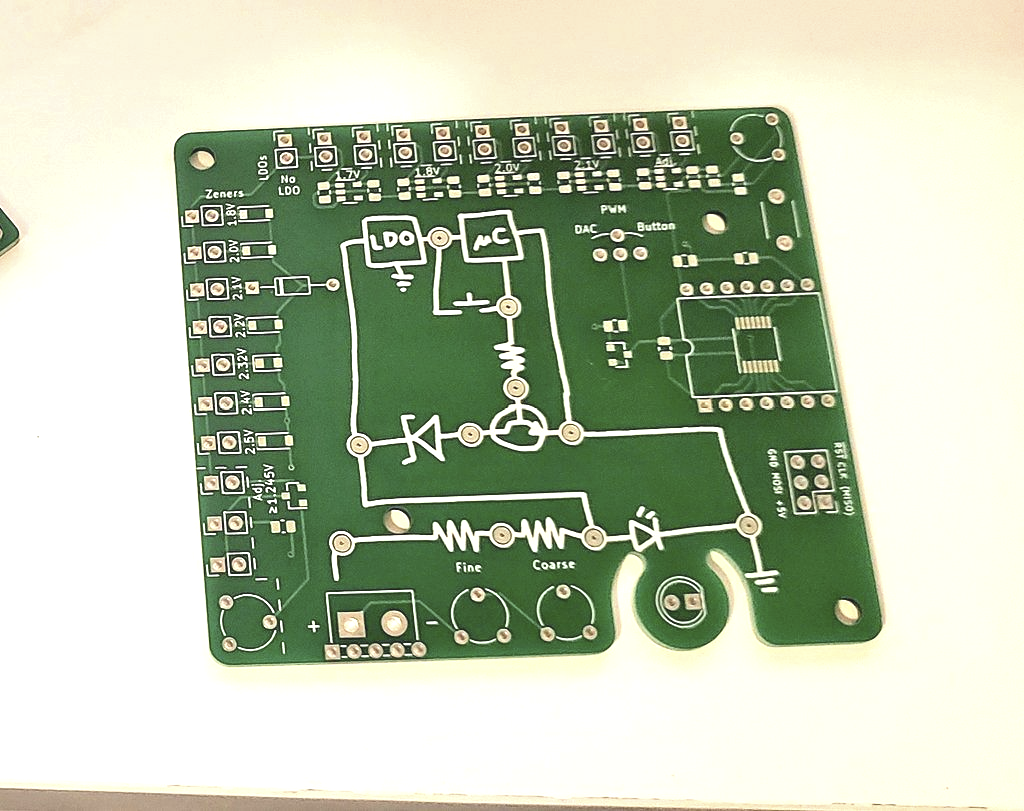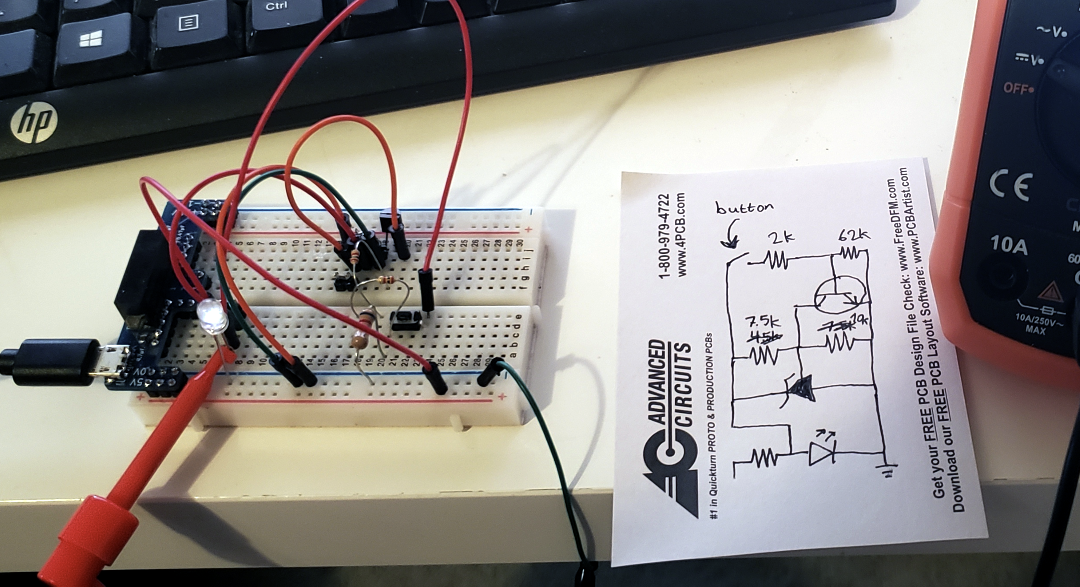-
IT WORKS
02/08/2022 at 01:40 • 0 commentsCheck out this video! It's working!!
I assembled the wee PCB Sunday night, but it had an odd behavior, never turning on at all during the "flashing on and off" portion of the code. My first guess was that it had something to do with the 47kΩ and 68kΩ resistors that I used instead of the expected 4.7kΩ and 7.5kΩ, but the TLVH knowledge base suggests that shouldn't change anything except at particularly low currents. In my shower thoughts today I realized it could be the pin that I'm using for ADC measurements. The pseudorandomness of the flicker comes from taking multiple consecutive ADC readings on floating pin, and only keeping the least significant bit each time. Maybe a solder blob under the chip was influencing the ADC readings? So I switched to the one remaining spare pin for ADC readings and IT TOTALLY WORKED NO OTHER ISSUES yessssssssssss
The git repo is updated. I still want to tweak the animation a little more before I cut the LED loose from the programming jig.
-
Protoboard success!
01/24/2022 at 07:43 • 0 commentsI just updated the git repo and project description to reflect the new version that I've been testing. The circuit has a much lower part count now, just four passives and the two ICs. The tradeoff is that the microcontroller GPIO pin must never be driven HIGH. When it's driven LOW, it shorts half the resistor divider for the TLVH431, which causes the TLVH431 to send its Vout as high as possible. When the GPIO pin is set to its High-Impedance state, the resistor divider sets Vout to 2.0V and pulls current away from the LED (without shutting off the microcontroller in the process). Driving the GPIO high would push Voutdown to 1.24 V which would definitely shut off the microcontroller.
Pictures are in the updated project description! PCBs should arrive in a week!
-
Diode disappointment, new design, old designs
01/15/2022 at 00:25 • 0 commentstl;dr The previous design seems less feasible now, but it inspired another, and also I'm revisiting a design from 2018
I made a development board to experiment on, take measurements, and do things that would be impossible on the 5mm-diameter version. There are multiple values of LDO (including no LDO), multiple Zener diodes (including a TLVH431 adjustable shunt), and best of all, the schematic is right there with easy-to-reach test points!
A microcontroller isn't necessary for tests—there's a pushbutton to mimic the GPIO. With the 1.8V LDO and 2.1V Zener diode selected, pressing the button does shunt current around the LED. Current through the LED drops from 17mA to 2mA, still illuminated but much much dimmer. Using the TLVH431 adjustable shunt when it's set to about 2.0V, the LED drops even further, to an undetectable 0.5mA current. Awesome!
Unfortunately, using the actual 2.0V Zener diode does not work. Why? I did not realize how dramatically the Zener voltage increases with current. Here is the relevant graph from my 2.0V Zener's datasheet (I highlighted the relevant curve and faded out the nearby ones to make the grid easier to see)
These Zeners in tiny packages with low voltage values may be rated for 200 mW or more, but when an LED's worth of current goes through it, the reverse voltage goes much higher than the stated value. This renders them useless for shunting current around the LED. I had no idea this happened to small Zeners! I thought I had four faulty values, from three different manufacturers! Now I know to look for this quirk in the future, I suppose.
So what do I do if I want to shunt 20-ish milliamps at 2-ish volts around an LED? One option is to keep using a 1.8V or 2.0V Zener diode, but in a larger package. That would mean inviting my arch-nemesis, the MELF, into my domain. I have no intention of letting that happen. Instead, I'm going to try sticking with the TLVH431, which comes in a SOT-363 (SC-70-6) package that juuuuust fits on the PCB in question. The shunt voltage is normally determined by a resistor divider; we can use a transistor to circumvent one of the resistors and programatically change the 431 voltage without many components. This seems to work pretty well, so far:
I need to do some experimentation to find the right values for the passives that permit it to work with a wide input voltage range. Shamefully, I still haven't tried controlling any of these with an actual ATtiny yet. [daniel] helpfully pointed out that I would likely be better off with a low-pass filter than an LDO for the ATtiny, so that is another thing to fiddle with.
While I'm at it, I may as well revisit a similar project from 2018. It's also a fluorescent-flicker LED, but not a drop-in replacement. I'll save that for another update, though.
 Sam Ettinger
Sam Ettinger


